|
Summertime brings with it beach and pool time, picnics, vacations, and lazing in the hammock. Unfortunately, heat waves and unbearable humidity can also accompany the summer months. One often hears the phrase “dog days of summer.” The origin of this phrase is related to the stars, not dogs wilting in the summer heat! Sirius is the brightest star in the night sky and part of the constellation Canis Majoris—the “Greater Dog.” The ancient Romans and Greeks believed that when the Dog Star, Sirius, appeared in the sky and occupied the same region as the sun, it created the hottest days of the year. They also believed it brought bad luck, drought, and chaos. The Romans called it “dies caniculares” or “days of the dog star.” For the ancient Romans, the dog days of summer were believed to occur from approximately July 24 to around August 24. Over time, the constellations have drifted, and the “dog days” dates have changed. According to the Old Farmer’s Almanac, the Dog Days are considered to be between July 3 and August 11 in the Northern Hemisphere. However, it seems that these days, heat and humidity may linger for a bit longer, regardless of Sirius’s position in the sky. Although one might tend to prefer white or rosé wines as the temps begin to climb, red wines should not be overlooked during the summer months. Many light-bodied to full-bodied reds are ideal for sipping outdoors while enjoying grilled fare. For instance, unoaked or lightly oaked red wines tend to be lighter and fruitier. Slightly chilling many red wines for no more than 30 minutes can enhance the flavors, minimize the focus on alcohol, and make the wine more refreshing. When choosing a wine to drink while outside on a hot day, I recommend staying below 14% ABV. (alcohol by volume) Alcohol is a diuretic that contributes to dehydration. And when combined with outside heat, which leads to sweating, one can become dehydrated quickly. Therefore, it is essential to drink water and stay hydrated! Here are two white and two red Italian wines to enjoy this summer or any time of the year. The Whites Bolla Soave Classico DOC 2023 Founded in 1883, Bolla winery is situated in the countryside of Valpolicella and produces classic Venetian wines. This wine is 85% Garganega and 15% Trebbiano di Soave. Grapes are sourced and handpicked from 15-to 25-year-old vines in the Soave Classico hills, where the soil is of volcanic origin. After fermentation in stainless steel vats, the wine is left on the fine lees at a low temperature until it is ready for blending. Nose: White blossoms, apple, tropical fruit and citrus. Palate: A dry white wine with lots of character. Silky texture with pineapple, melon, honeysuckle, and lemon curd. Light and refreshing! Alcohol: 13% SRP: $9.99 Pairing suggestions: Enjoy as an aperitif or with seafood, light pasta, risotto, or salads. La Scolca Gavi Dei Gavi Gold Edition DOCG 2021 La Scolca is located in the prestigious terroir of Rovereto di Gavi in the Piedmont region. They have been producing wine for over 105 years and are in their fifth generation, where tradition is combined with modernity. 100% Cortese grapes are sourced from the Gavi hills in vineyards with vines up to 60 years of age. Fermentation takes place in stainless steel tanks and rests on the lees until bottling. Nose: White flowers, green apple, almonds, citrus and minerality. Palate: A dry, crisp wine with fresh acidity and balanced notes of flint, almonds, honeydew, and white fruit. A hint of citrus teases the palate on the finish. Alcohol: 12% SRP: $16 Pairing suggestions: Perfect as an aperitif or served with appetizers, fish, seafood, white meat, risotto, or Asian cuisine. The Reds Sensi Sabbiato Bolgheri Rosso DOC 2022 Sensi’s family history started in Chianti in 1890 and then expanded to other areas in Tuscany. Currently, the winery is managed by the fourth generation, which produced its first Bolgheri DOC wine in 2007. The grapes for this wine are a blend of 60% Cabernet Sauvignon and 40% Merlot, sourced from Bolgheri and Livorno in sandy, mineral-rich soils near the Tyrrhenian coast in Tuscany. After fermentation, the wine aged for 12-14 months in French oak barriques, approximately 50% of which were new wood. Further aging took place in bottles. Nose: Dark berries, baking spice, croissants, a touch of herbs and earthy. Palate: Aromas segued onto the palate with notes of plum, dark cherry, and pomegranate, balanced with acidity and salinity. Dark fruit lingers on a long finish. Alcohol: 14% I’ve included this wine despite its 14% alcohol volume. It is a great addition to enjoy with barbecue fare. But save it for a cool summer day or evening, not a heat wave! SRP: $18 Pairing suggestions: Enjoy with your favorite grilled meat, seafood, white meat, or pasta and sauce. Tenuta Regaleali Lamùri Nero D’Avola Sicilia DOC 2020 Tasca Conti D’Almerita boasts over 200 years of winemaking history in Sicily, dating back to 1830. It remains family-owned and run by the Tasca family. They have five estates throughout Sicily, with Tenuta Regaleali considered the “mother estate” comprising 550 hectares in the highlands of central Sicily. In the Sicilian dialect, Lamùri means ‘love’ and represents the Tasca’s love for their native Nero d’Avola grape variety, estate-grown at some of the highest points in Sicily. This wine is 100% Nero d’Avola. After fermentation, the wine was aged for 12 months in 20% new and 80% 2nd and 3rd-year French oak barrels. Nose: Floral, dark cherry, berries, baking spice, herbs, and a hint of flint. Palate: Aromas spill onto the palate with soft tannins, berries infused with balsamic, and a savory finish of spice and acidity. Alcohol: 13% SRP: $19.99 Pairing suggestions: Grilled meat, chicken, game, seared tuna, pasta and red sauce, or pizza, Please remember that alcohol, in combination with high temperatures, can dehydrate us quickly, so be smart. Drinking plenty of water is essential when outdoors in sweltering heat, especially if you plan to consume alcohol! Until next time…
Cheers! Penina To leave a comment or if you have an inquiry, please contact me at [email protected] As most of you know by now, I drink white and red wines all year long. My palate and mood dictate what I drink, not the seasons. However, with the warmer weather finally here, the lighter wines tend to take preference, but not always! Sipping Pinot Grigio is a treat that is savored throughout every season in my home. To quote me from an article written in 2022, “Many, many years ago, when my taste buds started developing a fine appreciation for wine, Pinot Grigio was not high on my list of enjoyable wines. I felt it lacked personality. It wasn’t until several later that I tasted Pinot Grigio from the northeastern region of Italy for the first time and had an “aha” moment. So this was how Pinot Grigio was supposed to taste! I was hooked!” Pinot Grigio, aka Pinot Gris, is a white wine grape that thrives in a cool climate. The color of the skin ranges from dark purple to pink to grayish. (grigio means gray in Italian.) It is a dry, easy-drinking wine that is clean, fresh, and aromatic. Flavors range from zesty and straightforward to complex. Typical flavor profiles of this wine include but are not limited to floral notes, green apple, lime, lemon, white stone fruit, pear, honeysuckle, bitter almond, bright acidity, and minerality. Due to Pinot Grigio’s racy acidity, it’s a versatile companion to a variety of dishes. From seafood, especially oily fish, to shellfish, white meat, light pasta, salads, and vegetable risotto, it pairs beautifully. Or, enjoy it as an aperitif! I was recently offered a few Pinot Grigio samples to review, to which I replied, “Yes, please!” So, let’s dive in! Trentino Ventessa Pinot Grigio Vigneti delle Dolomiti IGT 2023 This wine is produced by Mezzacorona, located in Trentino in the Italian Alps. The winery, surrounded by the Adige River, has been crafting estate-grown wines since 1904. Ventessa is made without chemical alteration. After the grapes are hand-harvested, they are immediately crushed and undergo a very short cold maceration in the press. The grapes are then softly pressed. The musts are then fermented for eight days. The wines are kept on the yeasts in steel tanks and are naturally low in calories and alcohol. Nose: White flowers, peach, and melon. Palate: White stone fruit, honeydew melon, citrus, and a touch of minerality balanced with crisp acidity. A light and refreshing sip! Alcohol: 9% SRP: $10.99 Pairing suggestions: Enjoy as an aperitif, or Mezzacorona suggests pairing with delicate finger foods, shellfish, medium-mature cheeses, and baked & fried fish dishes. Veneto Pasqua Black Label Pinot Grigio delle Venezie DOC 2023 My “love affair” with Pasqua Wines continues with this Pinot Grigio. Their expressive and memorable wines always please my palate. This family-run business was founded in 1925 and is located in Verona. It is led by third-generation Pasqua brothers Riccardo and Alessandro. The company has complete control over approximately 741 acres of vineyards (1/3 is estate-owned), stretching from Lake Garda to Soave. After the grapes are harvested, fermentation takes place in steel tanks. 30% of the wine ends alcoholic fermentation in French oak barrels and continues aging in Tonneaux of second use for about 3 months. I love the glass stopper! Nose: Beautiful floral notes with white stone fruit, pear, toast, and a trace of vanilla. Palate: Aromas segue onto the palate with nuanced notes of apricot, white peach, and tropical fruit. Toasty flavors and vanilla linger on the finish. It is complex, balanced, and very satisfying. Alcohol: 12% SRP: $14.99 Pairing suggestions: Pasqua suggests fish appetizers, shellfish, clams, fish-based first courses, white meats, and sushi. Friuli Venezia-Giulia Livio Felluga Pinot Grigio DOC 2023 Founded in 1956 by Livio Felluga, one of the most respected producers in Friuli, this 500-acre estate has 370 acres of wine vineyards in the Collio and Colli Orientali del Friuli. Livio is renowned for his dedication to reviving high-quality viticulture in Friuli. Livio’s son, Andrea Felluga, now continues the family legacy of producing wines of distinction. Grapes for this wine were hand-picked. After fermentation in steel vats, the wine was kept on the lees for a few months to increase its complexity, creamy texture, and suitability for aging. Once bottled, it matured in temperature-controlled rooms. Nose: A bouquet of white flowers, peach, pear, apricot, and lemon.
Palate: This wine dances with aromas that segue onto the palate. Minerality, crisp acidity, and a savory/salty dance add to this wine’s complexity. Lemon tarts and sweet apples linger on a long and fruity finish. Alcohol: 13.5% SRP: $35 Pairing suggestions: Livio Felluga noted that this wine pairs beautifully with fish, shellfish, risotto, and baked vegetables. Remember, Pinot Grigio is not just a summer indulgence; it’s a year-round delight. Its crisp, clean taste is a perfect match for any season, whether it’s a warm summer day or a cozy winter evening. So, next time you are offered a glass of Pinot Grigio from northeastern Italy, say, “Yes, please!” Until next time… Cheers! Penina To leave a comment or if you have an inquiry, please contact me at [email protected] It never ceases to amaze me that I can visit countries worldwide and converse in real-time with friends and family or meet with wine producers through the wonders of technology. Not long ago, I traveled to northern Italy via a Zoom meeting with brothers Aldo and Paolo Rametta to learn about the Romagna wine region and their two estates and a tasting of several wines they produce. The slopes of Romagna nestled in the eastern part of the Emilia-Romagna wine region in northern Italy are a treasure trove waiting to be explored. Romagna is a buffered zone between the Apennine mountains and the Adriatic Sea and is known for its rich and fertile terroir. The Emilia-Romagna region, with its proximity to Tuscany, Lombardy, Veneto, and the Adriatic Sea has a rich history of wine production dating back to the seventh century BC and is considered among the older Italian wine regions. It’s capital is Bologna. Aldo and Paolo were born in Louisiana, and although they grew up in the United States and Switzerland, they spent most of their lives abroad. Their passion for the environment, traditional winemaking, and family roots and history led them to Romagna and the purchase of two very distinct wine estates. Their main goal is to produce “a gentle expression of high quality from single vineyards.” Poggio della Dogana is the first wine project begun by the Rametta brothers. They purchased the estate in 2017, located in Terra del Sole. It includes a vineyard that is more than twenty years old which was already in organic conversion at the time. The vineyards cover a total of 20 hectares on a hilly area between Castrocaro Terme and Brisighella, at an altitude between 180m and 300m, with different soil characteristics in each area. The focus of the estate is representative of the Romagna territory, which grows Sangiovese and Albana, a white grape. Aldo said, “Albana is a white wine but quite peculiar for a white variety. We joke that it is red wine dressed in white. Its thick skins release tannins and complexity.” Ronchi di Castelluccio is in Modigliana, in the heart of the Sangiovese di Romagna lands. The Rametta brothers acquired this historic estate in 2020. There are approximately 30 hectares, with vineyards at an altitude between 250 and 500 meters above sea level. Biodiversity and sustainability are practiced in the single vineyards. “The historic vines have been restored, no plant has been torn down and the old growing systems have been introduced.” Except for Sauvignon Blanc, all the crus are 100% Sangiovese grapes. Here are four wines we tasted together (samples I received prior to the meeting.) Ronchi di Castelluccio Sottovento di Castelluccio IGT 2021 Produced from a single vineyard, this 100% Sauvignon Blanc was hand-harvested at an altitude of 390 meters. Soil is marl and calcareous sandstone. Fermentation took place in stainless steel and the wine was aged nine months in wood and a minimum of nine months in bottle. Nose: White flowers, citrus, white stone fruit, saltiness. Palate: Aromas segue onto the palate with fresh and lively notes, and sapidity lingering on the finish. Alcohol: 13% SRP: $40 Poggio della Dogana Belladama Romagna DOCG Albana Secco 2022 This 100% organic Albana was hand-harvested from 20-year-old vineyards at 200m and 300m altitude. Fermentation took place in stainless steel vats, and was aged for ten months in concrete and a minimum of four months in bottle. The typical signature of this wine is its intense golden color, which becomes more intense as it ages. Nose: White flowers, citrus, peach, apricot, and herbs. Palate: Lively acidity, fresh, dry, good structure, and a touch of minerality. A trace of tropical fruit and citrus zest linger on the finish. Alcohol: 13.5% SRP: $30 Ronchi di Castelluccio Buco del Prete di Castellucio DOC Sangiovese Modigliana 2021 From the 300m alt. single vineyard of the same name, Buco del Prete, this 100% Sangiovese was hand-harvested and fermented in steel. Aging took place in large French oak barrels for 12 months and at least six months in bottle. This vineyard is the lowest altitude vineyard on the estate at Modigliana. Nose: Dark fruit, forest floor, baking spice, and a hint of lavender. Palate: Rich dark fruit, dark berries, black cherry, fennel, lively acidity, smooth tannins, and a touch of spice on a long finish. Alcohol: 13% SRP: $40 Ronchi di Castelluccio Ronco della Simia DOC Sangiovese Modigliana 2020 The grapes for this 100% Sangiovese were sourced from Modigliana, in a vineyard restored in 2019 that was originally planted in 1975. It is a single vineyard with the highest elevation for a Sangiovese vineyard. (370 meters alt) Fermentation took place in steel and small oak vats and then was aged for ten months in Allier, Vosges, low-toasted tonneaux, and barriques. It then remained in bottle for a minimum of 14 months. Nose: Violets, red fruit, earthy, and baking spice. Palate: Beautiful texture and mouthfeel. Sapidity is present. Juicy, meaty fruit, dark cherry, smooth tannins, sweet spice, and a long finish. Alcohol: 13.5 % SRP: $140 In addition to my palate being entertained, the Rametta brothers had lots of information and stories to share. Their passion, love, and respect for the environment and history were palpable. They have piqued my interest in visiting Romagna and immersing myself in the land, culture, and wine! “There is no future without respect for history: we will be brave and let ourselves be driven by dreams and emotions.” Aldo & Paolo Rametta Until next time…
Cheers! Penina To leave a comment or if you have an inquiry, please contact me at [email protected] A short time ago, through Zoom, I, and several other writers spent a fascinating hour with James Marshall Lockyer, winemaker at Tenuta Licinia, and 3rd generation of this family-owned winery. Tenuta Licinia is a small winery at the foothills of the Tuscan Apennines near the village of Lucignano in the province of Arezzo. Today, the property has 60 hectares of woods, 6.5 hectares of vineyards, and 3 hectares of olive groves. In the early 1970s, James’s grandfather, Jacques de Liedekerke, who lived in Belgium, bought the property with an abandoned farmhouse and small vineyard. Jacque took on the restoration of the farmhouse, but as James said, “For the first 20-30 years, my grandfather really didn’t do much with the vineyard. He enjoyed wine but was not knowledgeable in winemaking. He grew up with old-school ideas of winemaking and didn’t understand Tuscan soil, geology, or what made a vineyard good or bad.” Over the years, Jacque learned more about the vineyard and subsoils and thought it might be worth replanting. So, in 2006, Jacques decided to replant the Sasso Di Fata vineyard as a retirement project. Because he was French-Belgium, and drank Cabernet Sauvignon, he decided to plant it. It took many years of tests, research, and many attempts, but by 2019, the wines began to assume the vineyard’s identity. In 2020, James arrived at Tenuta Licinia and took over what his grandfather had begun. James explained, “At the time, I was finishing my doctorate at Oxford University, focusing on foundations of ethics and sensorial value. About winemaking, James said, “I am semi-self-taught and guided by very good mentors and professionals. In addition, I did a few internships.” His doctoral studies proved to be helpful as a winemaker. “It motivated me to think carefully about what kind of wine I want to make, what truly matters in the wine I make, and what types of properties are relevant to making a high-quality wine.” What his grandfather had planted, half of the vineyard was decent, and the other half was great. For James, this introduced one of the many puzzles they’ve worked on for the last several years: understanding Tuscan subsoils. James said, “One of the difficulties with Tuscan subsoil is that it changes very quickly, every 30 -40 meters. As part of their project, they focus on identifying small and abandoned parcels and bring them back to high-quality production. “We are developing Sangiovese on the parcels we now find.” Regarding his grandfather’s planting in 2006, on one side of the hill is Sasso Di Fata, and on the other side of the hill is the Montepolli vineyard. James divided the vineyard based on the subsoils. James said that Sasso Di Fata has much more beautiful subsoil than Montepolli. James stated, “Sassa Di Fata subsoil is lime-slate, and the slate is paper thin. Slate is viable and roots can go right through it very quickly. This soil contributes to a much more beautiful grain of tannins, sophisticated aromas, and floral direction. Slate can give a savory/saline finality to the wine.' The Montepolli subsoil is a clay-limestone plot with a Merlot base. It is too “clayish” with certain defects. The tannins can be quite wide and massive, and the aromas and minerals can be quite reduced on this soil type.” James went on to say, “I have an old-school subsoil view, that subsoil is very central to making great wines. It’s the physical structure underground that is key. In addition to the soil, it is the drainage and temperature underground combined with root penetration, which is important.” We tasted three Tenuta Licinia wines. All the grapes are picked by taste, not by analysis, for the best maturity. In addition, the winery has been certified organic since the vines were planted, and they follow a biodynamic program in the vineyard. Sasso Di Fata IGT Toscana Rosso 2019 This wine is produced in the clos style, with the grapes sourced from a small vineyard with a specific subsoil, and therefore, the wine is only produced in extremely small quantities. The 2019 Sasso di Fata is a blend of Cabernet Sauvignon (70%) Cabernet Franc (25%) and Petit Verdot (5%). It is aged 16 months in second passage French oak Tonneau (500L). Nose: Fragrant rose petals, red berries, and spice. Palate: Beautifully balanced with red fruit, spice, licorice, and a hint of mint. Gentle tannins and a dance of saline and minerality lead to a long finish. Alcohol: 14.5% Montepolli IGT Toscana Rosso 2019 This wine is produced in the clos style, with the grapes coming from a small vineyard with a specific clay-limestone subsoil, and therefore, the wine is only produced in small quantities. This is the first vintage. The wine is a blend of 47% Merlot, 22% Cabernet Sauvignon, 19% Cabernet Franc, 12% Petit Verdot. It is aged 15 months in second passage French oak Tonneau. James did the aging and blending for this wine. Nose: Strawberry, cherry, anise, floral, and a touch of balsamic. Palate: Strawberry segues onto the palate with soft cherry notes, herbs, baking spice, and minerality lingering on the finish. Alcohol: 14.5% Sasso Di Fata IGT Toscana Rosso 2021 This wine was bottled just a few months ago and a treat to sample. The 2021 is James’s first vintage, and it’s a winner! It is a blend of 55% Cabernet Sauvignon, 35% Merlot, and 10% Cabernet Franc. Aging was approximately ten months in second passage French oak Tonneau (500L.) Like the other wines, this is also produced in the clos style, with the grapes sourced from a small vineyard with a specific subsoil. Nose: Floral with emphasis on rose petals, red fruit, plum, and spice. It is a darker color than the 2019.
Palate: It is lush with fruit and spice and a true expression of the vineyard. There is a beautiful balance between minerality, salinity, and tannins. Alcohol: 14.5% Pairing suggestions: All three wines are well-suited to meat dishes, game, porcini or truffle risotto, seared tuna, and hearty stews. A final note from James: “Our approach to winemaking is to really value the aromatic purity, beauty, and mineral expression, as much as the textural side.” Until next time… Cheers! Penina To leave a comment or if you have an inquiry, please contact me at [email protected] Happy New Year! Are you ready to embrace 2024? I certainly am! I have lots to share with you over the next few months, which includes more insights on my trip to Mt. Etna and Alentejo, a Bulgarian dream tour, and lots of wine from around the world! With the season’s first significant snowstorm in progress, I decided to sample a few red wines to entertain my palate while the snow piles up outside. So, let’s start toasting the New Year with these tasty treats from Italy, Portugal, and Chile. Masciarelli Montepulciano d’Abruzzo DOC 2020 Masciarelli Tenute Agricole is a family-owned winery founded in 1981. Led by mother-daughter team Marina Cvetić and Miriam Lee Masciarelli, the winery is the only one in Abruzzo to own land in all four provinces ((Chieti, Pescara, Teranio, and L’Aquila.) They have 350 hectares of estate-owned vineyards and are committed to sustainability in the vineyards and the winery. Masciarelli has 22 labels and seven product lines. This wine is 100% Montepulciano, hand-harvested from nine specific vineyards. It is aged in stainless steel tanks and then bottled without fining or filtration. Nose: Violets, cherry, berries, and spice. Palate: Juicy bing cherries, red berries, spice, and a hint of herbs. It is nicely balanced and good value for the price! Alcohol: 13.5% SRP: $15 Pairing suggestions: Pizza, pasta, grilled meat, or charcuterie board. Dos Lusíadas Pinteivera Tinto Douro Valley DOP 2018 Michel Chapoutier is an iconic winemaker and wine merchant known for his organic wines in the Rhone Valley, France. In 2009, he picked out a small, three-hectare plot in the Douro Valley, Portugal. His motivation was to produce wine from the indigenous and most praised grape variety, Touriga Nacional. He and local growers collaborated, resulting in the creation of Pinteivera. This 100% Touriga Nacional is hand-harvested at maturity, and the wine is aged in 100% French oak barrels for 12 months, with a percentage that goes to new barrels varying from year to year. “Dos luisiadas is named after the famous poem, Os Lusíadas, written by Portuguese poet Luís Vaz de Camões. This epic work tells the tale of the Portuguese explorer Vasco de Gama’s travels to India.” Nose: Violets, berries, and spice, with a touch of cherry and herbs. Palate: Lovely notes of dark fruit, plum, dark cherry, wisps of minerality, and notes of dark berries and dark chocolate lingering on a long finish. Beautiful depth and character. Alcohol: 15% SRP: $38 Pairing suggestion: Hearty stews, braised brisket, seared tuna, chili, or grilled octopus. Viña Maquis Gran Reserva Cabernet Sauvignon 2018 Viña Maquis is located in the heart of the Colchagua Valley in Chile between the Tinguiririca River and the Chimbarongo Creek. Both waterways act as conduits for cool coastal breezes that moderate the warm summers and have a pronounced effect on lowering the temperatures during the hot season. The winemakers said, “This has an impact on the characteristics of the grapes and the wines by increasing the fresh fruit and floral aromas, making the wines more vibrant on the palate and moderating the alcohol levels.” The Hurtado family has owned the estate since 1916, but its roots date back to the 1800s. They own 218 hectares of vineyards in the DO Colchagua Valley. The grapes for this wine are 90% Cabernet Sauvignon, 6% Cabernet Franc, 3% Carmenere, and 1% Petit Verdot. The grapes are all sourced and hand-picked from a vineyard in the Palmilla DO. The wine was aged for 12 months in French oak barrels. Nose: Red berries, plum, herbs, baking spice, and bing cherries. Palate: Aromas segue onto the palate with an emphasis on cherry and hints of minerality. The tannins are mild, and the wine has good structure and balance. The finish is long and heavenly. Alcohol: 14% SRP: $20 Pairing suggestions: Barbecue fare, stews, cheese plate, portobello burger, or seared tuna. Montes Wings Carménère 2020 Montes Winery is based in the Colchagua Valley, Chile, with its vineyards spread throughout the country. It was established in 1987 by original partners Aurelio Montes and Douglas Murray. In 1988, Alfredo Vidaurre and Pedro Grand joined the partnership. These visionaries created a company recognized worldwide today, with their wines exported to over a hundred countries. Wings was created from a long-running dispute between Aurelio Monte Sr. and his son, Aurelio Jr. His son wanted to produce a “more free-flowing style of Carménère.” The result is Wings. It is 85% Carménère and 15% Cabernet Franc. Grapes for this wine are sourced and hand-picked from their Finca de Apalta estate in the Colchagua Valley. The wine was aged in new French oak barrels (80%) and second- and third-use barrels (20%) for 16 months before bottling. Nose: Dark berries, cherry, pepper, baking spice, tobacco, and a hint of fig.
Palate: Lush dark fruit with spice and a touch of dark chocolate lingering on a long finish. Beautifully structured and complex. It will only get better with age! Alcohol: 14.5% SRP: $55 Pairing suggestions: Aged cheese platter, roasted/grilled meat, mushroom stew, lamb chops, or vegetable risotto. Fun fact: Chile has the most Carménère under vine in the world, at 10,332 ha/25,530 acres in 2021. By comparison, France has just 80 ha/197 acres. DNA analyses carried out in New Zealand in 2006 showed that several vines planted as Cabernet Franc are, in fact, Carménère. It is also present in Veneto, Italy, plus a few vineyards in China. I wish everyone a healthy, happy, and peaceful New Year! Until next time… Cheers! Penina To leave a comment or if you have an inquiry, please contact me at [email protected] If you haven’t tasted Lugana wines yet, you are in for a treat! Lugana is a small DOC located in northern Italy, south of Lake Garda. In addition to being one of Italy’s oldest protected wine-growing areas, it is also one of the few Italian wine regions spread over two provinces, Verona and Brescia. Lake Garda is one of the northernmost Mediterranean climates in Italy despite its location at the foothills of the Alps, and it is Italy’s largest lake. The lake basin was shaped by glaciers from 600,000 years ago, which left behind a significant accumulation of material, the morainic hills, deposited in the large amphitheater of Lake Garda. The lake water is colder than the air in summer and warmer in winter, which significantly impacts the temperature, lessening the hot summers and harsh winters here, and is beneficial to the vineyards. The Consorzio Tutela Lugana DOC said, “The area is characterized by very particular soil, made up predominantly of white clays and limestone, and capable of giving the grapes cultivated here extraordinary elegance and tanginess.” The Consorzio Tutela Lugana DOC was established in 1967 and was the first to be given this status in Lombardy. Their mission is to supervise, defend, and promote, with particular emphasis on protecting and highlighting the qualities of the denomination and its wine. Turbiana is the region’s signature white grape. It is a versatile grape used to make dry, off-dry, sweet, and sparkling wines ranging from light to complex. Because the grape is salty and high in acid, it gives way to wines with delightful freshness, crisp acidity, pleasant salinity, and minerality, with floral notes, white stone fruit, tropical fruit, citrus, and almond. Lugana region produces five distinct styles of wine made from Turbiana, with DOC designation. The styles are Village-level Lugana, Superiore, Riserva, Vendemmia Tardiva (late harvest), and Spumante (sparkling). The DOC stipulates that Turbiana must make up at least 90% of the wine. Here are two Lugana DOC wines that will please your palate. Tenuta Roveglia Limne Lugana DOC 2022
This wine is 100% Turbiana. Grapes are hand-picked from 25 to 35-year-old vines. Fermentation takes place in stainless steel tanks, and the wine then ages four to five months in the tanks. Nose: Floral, citrus, green apples, and almonds Palate: A dry and refreshing wine with citrus, minerality, fresh acidity, and hints of orchard fruit. Alcohol: 13.5% SRP: $15 Pairing suggestions: Aperitif, appetizers, seafood, grilled white meat, salads, or light pasta. Tommasi Le Fornaci Lugana DOC 2022 This is 100% Turbiana. Grapes are obtained from clay soil, giving body and structure, and sandy soil imparting aroma and elegance. The grapes undergo a slow fermentation followed by aging in stainless steel tanks. Nose: Sweet floral notes, orchard fruit, minerality, and citrus. Palate: Floral, tropical fruit, pear, citrus, and minerality. It is fresh and lively with a hint of almond lingering on the finish. Alcohol: 12.5% SRP: $20 Pairing suggestions: Appetizers, cheese, seafood, mushroom risotto, BBQ, or spicy Asian cuisine. Lugana wines are fun to sip year-round. They are easy to pair with most cuisine or enjoy as an aperitif! Until next time… Cheers! Penina This is a sponsored article written for The Consorzio Tutela Lugana DOC for which I received compensation. To leave a comment or if you have an inquiry, please contact me at [email protected] Several months ago, I was invited to a virtual tasting of Famiglia Cecchi Wines led by their oenologist, Miria Bracali. It was a memorable sampling of wines representing a few of Cecchi’s estates in Chianti and Maremma, located in Tuscany. In 1893, Luigi Cecchi founded the company in a small Tuscan village. It has since been passed on from one generation to the next, and today is led by brothers Cesare and Andrea, the fourth generation of the family. The Estates Today In addition to the Cecchi estate, the family owns and oversees five other wine estates, four in Tuscany and one in Umbria. The family’s first purchase was Villa Cerna in the early 1960s, located in Castellina in Chianti. Today there are 80 hectares of established vineyards surrounding the renovated winery. In 1996, the family purchased 25 hectares in the burgeoning wine area of Maremma. After constructing an elegant winery, they named it Val delle Rose. Located in the Municipality of Grosseto, the estate today comprises 105 hectares of mainly Sangiovese proprietary vineyards used to produce Morellino di Scansano DOCG. By the end of the 1990s, the family began to look beyond their Tuscan borders and invested in the wine area of Montefalco in Umbria. They purchased Tenuta Alzatura, 26 hectares of vineyards across three parcels, dedicated to the enhancement of native vine varieties and the production of the region’s namesake label, Montefalco Sagrantino DOCG. In 2015, the Villa Rosa estate in Castellina was added to their winemaking estate portfolio. Villa Rosa is comprised of 30 hectares of vineyards that give rise to a traditional and elegant Chianti Classico DOCG. The last acquisition was made in 2018 when the family purchased 6 hectares of vineyards in Montalcino. The estate is called Tenuta di Montalcino. Throughout all the estates, sustainable winemaking is ongoing and vital to the Cecchi family, and they “consider protecting the environment a duty for those who work in the agricultural field. Territories are to be considered a heritage that must be defended and respected.” Here are four of the eight wines sampled from the estates of Valle delle Rose, Villa Cerna, and Cecchi. Val delle Rose Cobalto Maremma Toscana DOC 2020 The soil in Maremma has more acid, along with sand and rocks, resulting in more sapidity in the wines. This wine is 100% Vermentino. Fifty percent of fermentation takes place in oak, 34% in amphora, and 16% in stainless steel tanks. It is aged ten months with a minimum of six months in bottle. Nose: Sweet, herbal, minerality, and a hint of tropical fruit. Palate: Dry and fresh, with pear, white stone fruit, vibrant acidity, sapidity, minerality, and toasted oak. A complex and delightful wine with notes of the sea lingering on the palate. Alcohol: 13.5% SRP: $45-50 Pairing suggestions: Enjoy as an aperitif or with fish, seafood, mushroom risotto, or grilled chicken. Val della Rose Poggio al Leone Morello di Scansano Riserva DOCG, 2019 This wine is 90% Sangiovese and 10% Corvina. After fermentation in stainless steel tanks, the wine is aged for a minimum of 12 months in barriques. Nose: Floral, red, ripe fruit, earth, and spices. Palate: Plum, cherry, minerality, smooth tannins, baking spice, and cocoa with a long finish. Alcohol: 14.5% SRP: $35 Pairing suggestions: roasted or grilled meat and game, stews, risotto, or vegetable pizza. Cecchi Chianti Classico “Storia di Famiglia”, DOCG, 2020 This is Cecchi’s first Chianti Classico wine and most distributed. It is 90% Sangiovese, 5% Cabernet Sauvignon, and 5% Corvina. The wine is aged for a minimum of two months in bottle. Nose: Floral, red fruit, spice Palate: Fresh red fruit with nice acidity, cherry notes, cranberry, medium tannins, good balance, and a juicy finish. Alcohol: 13.55 SRP: $20 Pairing suggestions: Game, grilled tuna, pasta with sautéed greens, or chicken. Villa Cerna Chianti Classico Riserva DOCG 2018 Produced only in the best vintage years, this wine is 95% Sangiovese and 5% Corvina. 2018 was an excellent year for Sangiovese. The grapes are sourced from vineyards used only for Riserva wines. This wine is aged 14 months in barriques and small barrels, with a minimum of nine months in bottle. Nose: Floral aromas with red fruit, cedar, espresso beans, and spice.
Palate: Nice balance of freshness and acidity, with ripe red fruit, cherry, berries, baking spice, mineral notes, and a long finish. Alcohol: 14% SRP: $35 Pairing suggestions: Grilled meat, game, aged cheese, chicken parmesan, or pasta. If you’ve never tried Cecchi wines, then now is the time to indulge your palate with these Tuscan gems. They are reasonably priced and available almost everywhere. Until next time… Cheers! Penina To leave a comment or if you have an inquiry, please contact me at [email protected] It is a rare occasion that I write about importers of wine and spirits. My focus is usually on the wine or spirits producer. However, I make exceptions now and then, especially when seduced by my love for Italian wine! So, I’m giving a shout-out to Votto Vines. And, since the three Italian wine samples I received were very palate-pleasing and all under $30, what’s not to write about? Votto Vines is a family-owned and operated business founded in 2009 and headquartered in Connecticut. Michael P Votto is the CEO and co-founder of this dynamic business, focusing on importing, marketing, and distributing fine wines produced by leading vineyards worldwide. It all began when Mike Votto took a vacation to Tuscany. After falling in love with a small winery that lacked distribution in the US, he saw a business opportunity. So he pitched the idea of starting an importing company to his family. Today, Votto Vines has 30+ employees in five states and nationwide distribution capabilities. Here are three wines that represent Mike’s love for Italy and mine! Nestore Bosco Montepulciano d’Abruzzo DOC 2018 Nestore Bosco is a family-run business in the province of Pescara, in Abruzzo. Founded in 1897 by Giovanni Bosco, it is led today by Nestore and Stefanio, with the fifth generation ready to step in. The company has been certified organic since 2018 and practices sustainability. This wine is 100% Montepulciano d’Abruzzo and aged for several months in Slavonian oak barrels. Nose: Floral, dark cherry, red berries, a hint of plum, spice, and herbs. Palate: Aromas segue onto the palate with a smooth and well-balanced finish. Alcohol: 13.5% SRP: $13 Pairing suggestions: Charcuterie board, aged cheese, pasta, roasted meat, or risotto. Castelli del Grevepesa Clemente V11 Chianti Classico DOCG 2018 Established in 1965 by Sir Armando Nunzi, Castelli del Grevepesa is a modern- day cooperative that started with 17 winegrowers and now has over 120 associate winegrowers. Their objective is to produce high-quality wines that comply with the strict regulations of the law and Consorzio del Chianti Classico, and focus on sustainability. This 100% Sangiovese is hand harvested from the Chianti Classic zone. 85% is aged in Slavonian oak barrels for 12 months, and 15% in barriques for 12 months. It remains in bottle for three months. Nose: Fragrant red and dark berries, plum, and baking spice aromas. Palate: Dark cherry, berries, spice, vanilla, a hint of anise with subtle acidity, soft tannins, and a long finish. Alcohol: 13.5% SRP: $16 Pairing suggestions: Roasted red meat, game, hearty stews, or pasta. Torrevento Vigna Pedale Castel del Monte Riserva DOCG 2016 With a family history that goes back to 1913, Torrevento was established by the Liantonio family in 1989 and is located in the provinces of Bari and Barletta-Andria-Trani in the Puglia region. They manage over 500 hectares of vineyards with an eye on sustainability, research, and quality. Nero di Troia is an indigenous grape to Puglia, and Torrevento was the first winery in the world to make a 100% Nero di Troia in 1992. The grapes for this wine are sourced from vines over 30 years old. It is aged in large barrels for 12 months Nose: Lovely aromas of cherry, raspberry, herbs, earth, and spice.
Palate: Aromas spill onto the palate with a touch of plum, berries, silky tannins, and a long finish. Alcohol: 13.5% SRP: $28 Pairing suggestions: Roasted or grilled meat, game, and white meat. Hearty soups, stews, aged cheese, or pizza. Enjoy the sip! Until next time… Cheers! Penina To leave a comment or if you have an inquiry, please contact me at [email protected] A few months ago, I was invited to participate in a virtual tasting of six Bardolino Cru wines presented by the Consorzio Di Tutela Chiaretto e Bardolino and led by Angelo Peretti, Director. Below is a brief outline of our meeting and some interesting facts! The Bardolino wine region is located in the province of Verona in the Veneto region of northeastern Italy, bordering the eastern shores of Lake Garda. In 1825, three areas within the Bardolino winemaking region were identified and recognized by international grape merchants for their production of fine and elegant wines. These crus (subzones) are La Rocca, Montebaldo, and Sommacampagna. In 1968 Bardolino wines were given DOC title, but the three crus were not included. It wasn’t until 2015 that the Bardolino Cru project was initiated, and in 2018 the Consorzio asked the Italian government to recognize the crus. Finally, on April 12, 2021. the wines from all three crus were officially produced with DOC title and new regulations approved by the Italian government. The name of the cru has to be written in large font above the name Bardolino on every bottle due to each cru being a subzone with its own specific regulations. Bardolino wines are made with Corvina and a small percentage of Rondinella, both indigenous red grapes of the Verona province. About 25% of the wineries are organic, which is about 18% of the vineyards, with many of the wineries converting to biodynamics. Lake Garda is the largest lake in Italy and is one of the northernmost Mediterranean climates in Italy despite its location at the foothills of the Alps. The lake water is colder than the air in summer and warmer in winter, which significantly impacts the temperature, lessening the hot summers and harsh winters here. The lake basin was shaped by glaciers from 600,000 years ago, which left behind large deposits of material, the morainic hills, deposited in the large amphitheater of Lake Garda. Bardolino region is situated on the eastern shore of this morainic amphitheater. Due to the many deposits left by the glaciers, there are 66 different soil types that the zoning project has identified. Here are three wines to tempt your palate, one from each cru. La Rocca La Rocca is named for the hill overlooking Lake Garda. It is the closest district to the shores of the lake. Wines from this cru typically have a complex bouquet that usually includes raspberry and cinnamon. Giovanna Tantini La Rocca Bardolino DOC 2020 This wine is made with Corvina and a small amount of Rondinella. The grapes are handpicked and sourced from vineyards with morainal, gravelly, calcareous, and alluvial soils. Each grape variety is vinified separately, then blended and aged, 80% in stainless steel for 15 months and 20% in 5 hectolitre tonneau for one year. It remains in bottle for three months. The color is bright ruby with notes of fresh berries, cherry, sweet spice, and nice acidity, and it is smooth and balanced. Serve with meat, risotto, fish, light stews, or cheese. Montebaldo The name for this cru is derived from the mountain of the same name. It is the northernmost and highest point, with higher altitudes and a cooler climate. Wines from this cru typically have aromas of strawberries and cloves. Vigneti Villanella Montebaldo Bardolino DOC Morlongo 2020 The grapes for this wine are Corvina, Rondinella, and Corvinone. They are sourced from vineyards in the south-facing morainic hills in the hinterland of the lake. The soil is clay mixed with limestone. The blend is aged in large oak casks and then time in the bottle before release. The wine is bright ruby with a hint of garnet. Lovely aromas of fresh fruit with notes of strawberry and baking spice segue onto the palate. Hints of black pepper, balsamic, and strawberry linger on the finish. Serve with pasta, risotto, grilled chicken, fish, or appetizers. Sommacampagna This cru is in the southeastern hills and is the most southern cru and the warmest. Wines lean toward notes of cherry and black pepper. Monte Del Frà Sommacampagna Bardolino DOC Bonomo 2020 The grape varieties for this wine are Corvina, Rondinella, and Molinara, sourced from vineyards with original morainic and calcareous soils. The wine is aged in wooden barrels used for the third time. The wine is cherry red with red berries, cherry, sweet spice, and black pepper on the nose. The palate is fresh and lively, with berries, cherry, spice, and a hint of tea and herbs. It is smooth and balanced with a long finish. Enjoy this wine with appetizers, pasta, grilled meat, poultry, tapas, or seared tuna.
While on a press trip a few years ago, I visited three wineries in Custoza DOC, Bardolino’s neighbor. (first map) Part of the tour included Monte Del Frà, owned by the Bonomo family, and where their winery headquarters are located. Sommacampagna is one of 11 territories that the Bonomo family owns throughout Verona. The tasting lineup that day included the above wine. If you want more information about Monte Del Frà, please click on the link below to read my article. thewineknitter.com/1/post/2020/01/custoza-doc-wines-worth-knowing.html The Bardolino Cru wines are elegant, expressive, light, and very food friendly. Wines from this region are worth trying. Presently, approximately 20 wineries export to the USA. I can’t wait to explore this region, visit wineries, and taste more wines! Until next time… Cheers! Penina To leave a comment or if you have an inquiry, please contact me at [email protected] There is a saying that it takes a village to raise a child. And, at Il Conte Villa Prandone, it takes a determined family to produce noteworthy wines. Spanning three generations, the De Angelis family has dedicated themselves to making wine since the 1950s. Today, third generation Emmanuel (winemaker), Walter and Samuel (vineyard managers), and Marina ( office management) continue their grandfather and father’s philosophy and tradition. Each generation’s love of the land and passion for work in the vineyards and cellar are evident. Emmanuel De Angelis said, “Our philosophy is very simple. We want to preserve, protect, and respect our land. There are three elements; history, the identity of the territory, and style.” What began with their grandfather planting seven hectares has now grown to 50 hectares under vine. The winery is situated in the province of Ascoli Piceno, near the enchanting medieval village of Monteprandone in the beautiful Marche region of central Italy. The vineyards here benefit from the gentle breezes of the Adriatic Sea to the east and the mild currents of the Sibillini Mountains to the west. In addition to the beneficial microclimate, night and day temperature variations help to keep the grapes healthy. The medium-textured clay-limestone soil contributes to aromas and unique flavors. And the terroir is a perfect haven for giving the wines good structure and alcohol content. Most of the wine produced at Il Conte Villa Prandone comes from indigenous grapes, but they also grow a few international varieties. Sustainability and biodiversity are practiced in all of their vineyards. Recently, Il Conte Villa Prandone sent me six wines to try while participating in a fun zoom session with Emmanuel and Mara Bastiani De Angelis, the export manager. These wines are an elegant expression of the land and the family’s passion. Navicchio Offida Pecorino DOCG 2021 This 100% Pecorino is their only white wine that is vinified and aged in concrete tanks and amphoras. Emmanuel calls it “our diamond. It is a white wine in a red body.” He also said that it has a shelf life of 10+ years. Nose: Floral, spice, citrus, and a hint of yeast. Palate: Lovely acidity, citrus, lots of spice with lemon zest on the finish. Vibrant, fresh, and complex. Alcohol: 13% SRP: $15 Pairing suggestions: Enjoy as an aperitif or serve with seafood, poultry, salads, and mushroom risotto. Donello Marche Sangiovese IGP 2020 This wine is 100% Sangiovese. After fermentation, the wine is preserved in cement tanks before bottling. Mara said, “It is our best-selling wine.” It is intended to be consumed within eight to ten years of the vintage. Nose: Floral, spice, berries Palate: Fresh with cherry, red berries, a hint of violet, spice, and herbs. Alcohol: 13.5% SRP: $14-15 Pairing suggestions: Grilled meat, mature cheese, hearty stews, or game. Marinus Rosso Piceno Superiore DOP 2017 This is a blend of 70% Montepulciano and 30% Sangiovese grapes. It is aged for one year in oak barrels. Emmanuel called it “an intense wine.” Nose: Cherry, berries, baking spice, fennel, and a hint of espresso. Palate: Sweet and savory with dark berries, spice, and smooth tannins. Cherry and spice linger on the finish. Alcohol: 14% SRP: $20 Pairing suggestions: Grilled meat, game, seared tuna, hearty pasta, or stews. Zipolo Marche Rosso IGP 2018 This wine is an international blend and is produced in extremely limited quantities. The first bottle was produced in 1999. It is a selection of Montepulciano, Sangiovese, and Merlot grapes. The wine is aged 16-24 months in oak barrels and another 12 months in bottle. Emmanuel suggests giving it time to open up, perhaps an hour before serving. Nose: Intense aromas of plum, dark berries, baking spice, and toast. Palate: Concentrated flavors of blackberry, plum, baking spice, and vanilla. Velvety tannins, complex, and well structured. Alcohol: 14% SRP: $25 Pairing suggestions: Roasts, stews, hearty soups, vegetable risotto, and mature cheese. Lu Kont Marche Rosso IGP 2018 This wine is 100% Montepulciano sourced from single vineyards with 50-year-old vines. It is aged in oak barrels for 12 months, then another 12 months in concrete tanks. It rests for at least six months in the bottle before release. Emmanuel suggests opening one hour before serving. Nose: Fragrant and fruity with berries, baking spice, and herbs.
Palate: Aromas segue onto the palate with pomegranate, cherry, anise, and minerality. It is savory, complex, and elegant. Alcohol: 15% SRP: $30 Pairing suggestions: Roasts, game, poultry, hearty stews, pasta, mushroom risotto. IX Prandone Marche Rosso IGP 2017 The label is a dedication to the town founded in the ninth century. The wine is 100% Merlot that is produced in very limited quantities. It is fermented in concrete tanks for 25-30 days and then aged in oak barrels, concrete tanks, and amphoras for 30 months. It then rests in bottle for one year. Nose: Violet, ripe red fruit, plum, berries, baking spice, and earthy. Palate: Juicy with good structure, cherry, blackberry, spice, and a hint of cocoa. Alcohol: 14.5% SRP: $80 Pairing suggestions: Grilled meat, game, spicy cuisine, roasted/caramelized vegetables, or charcuterie. I encourage you to explore these wines, and, better yet, put Marche on your bucket list of places to visit and sip a glass of wine surrounded by beauty! Until next time… Cheers! Penina To leave a comment or if you have an inquiry, please contact me at [email protected] |
Categories
All
|









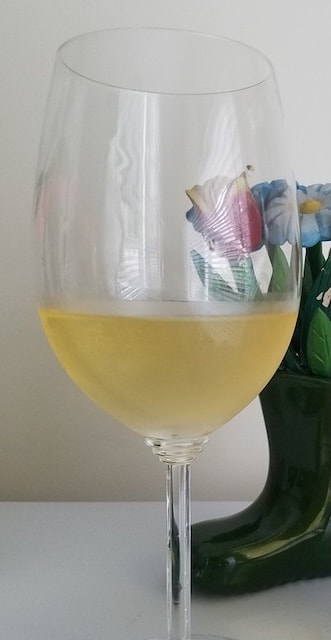
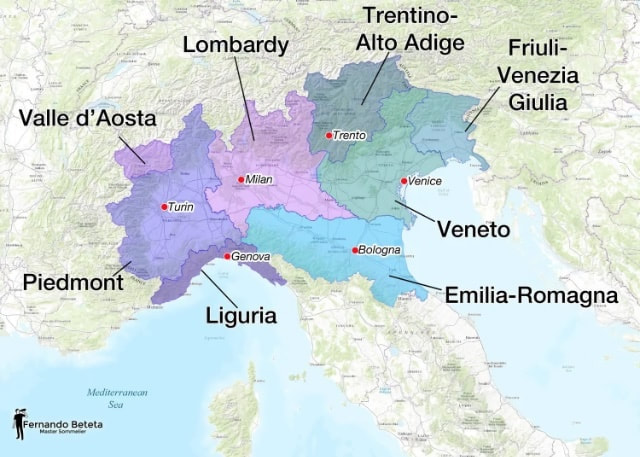
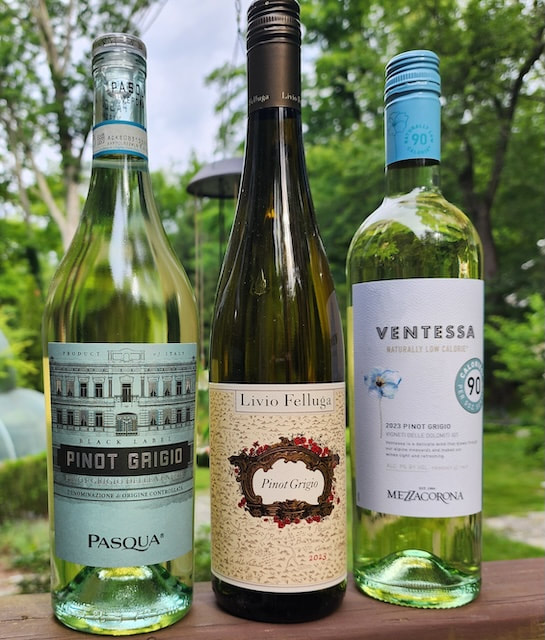
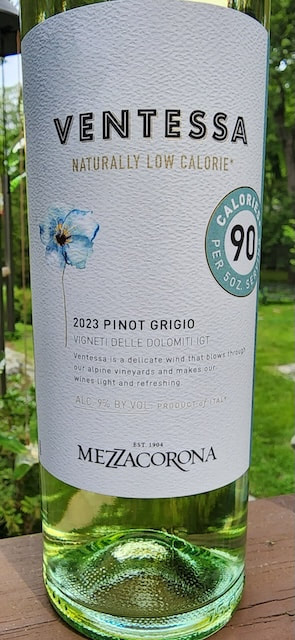
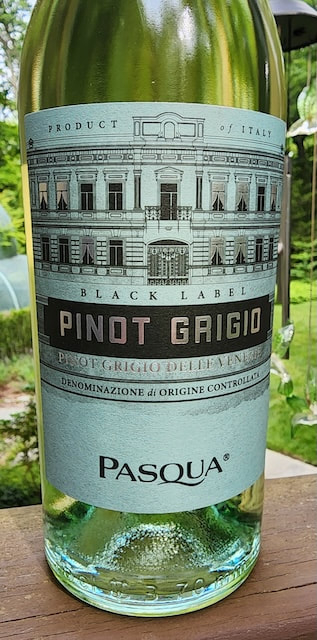
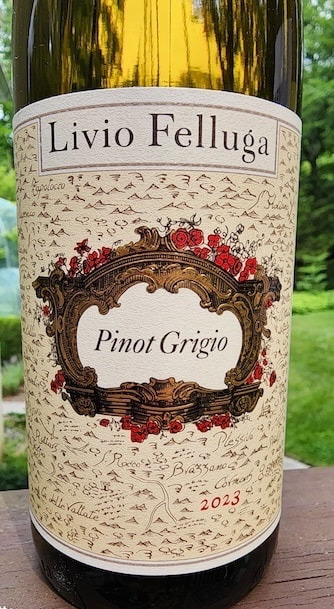
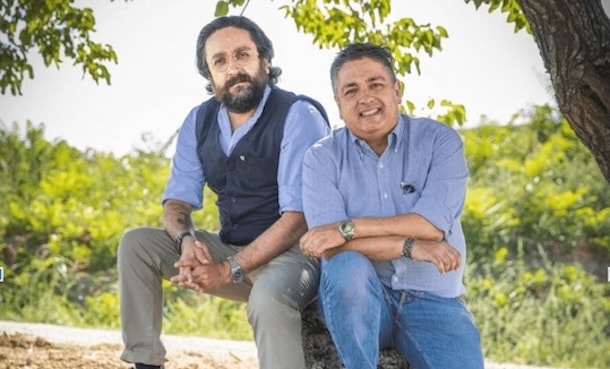
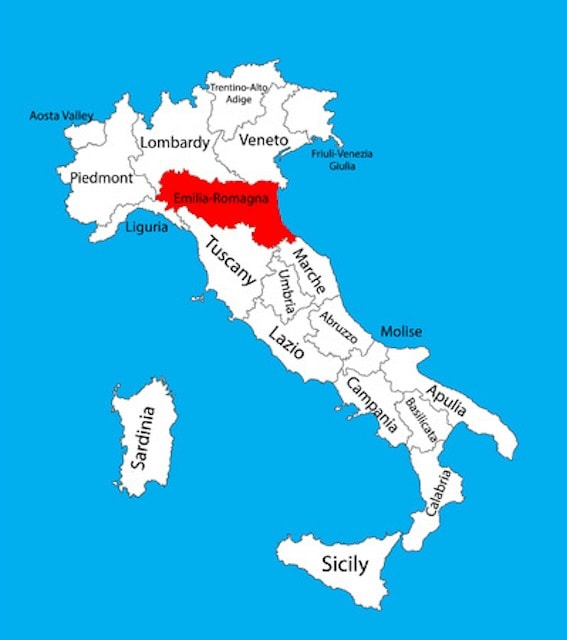
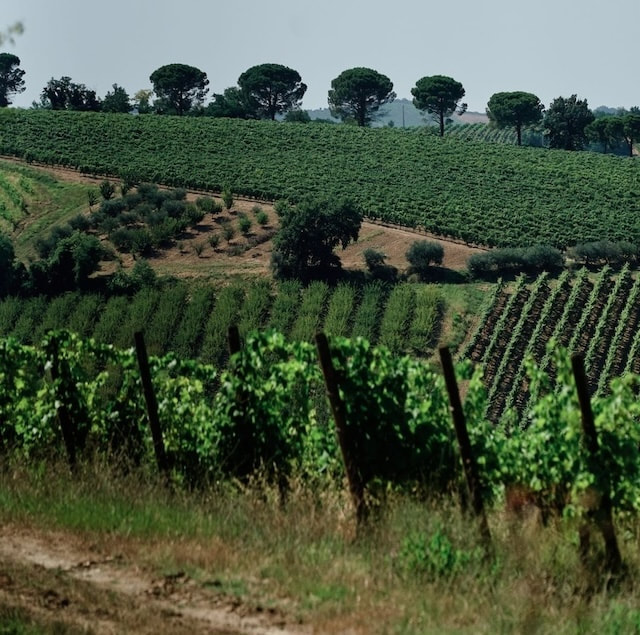
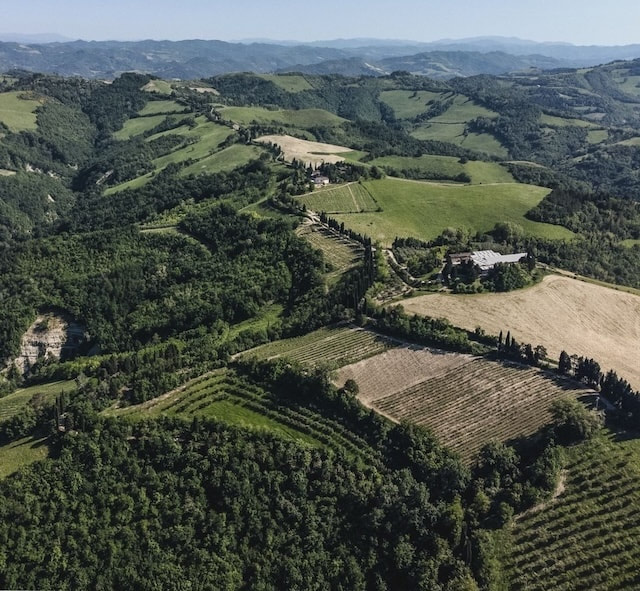
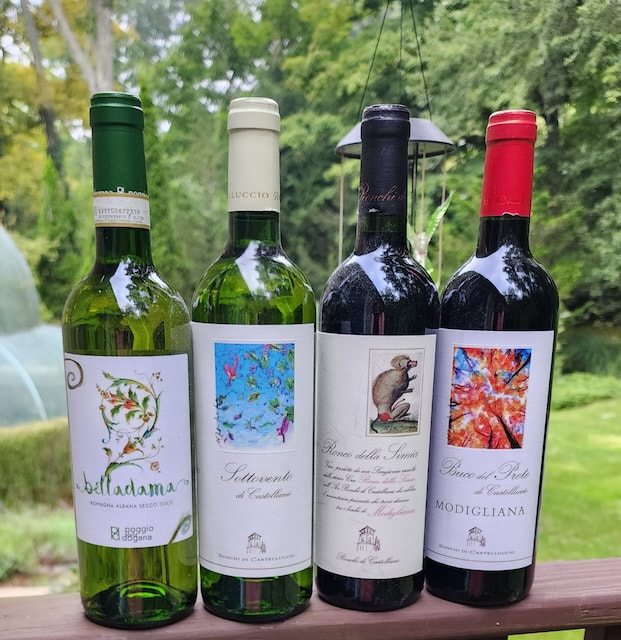
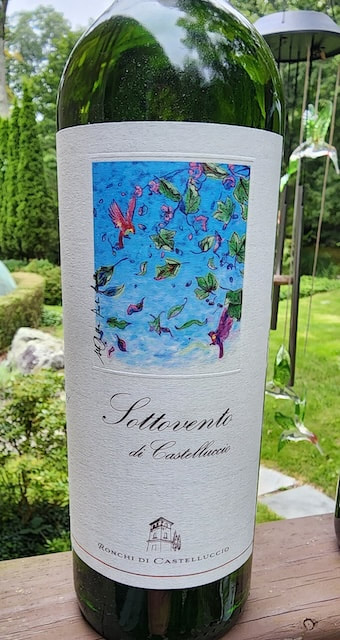
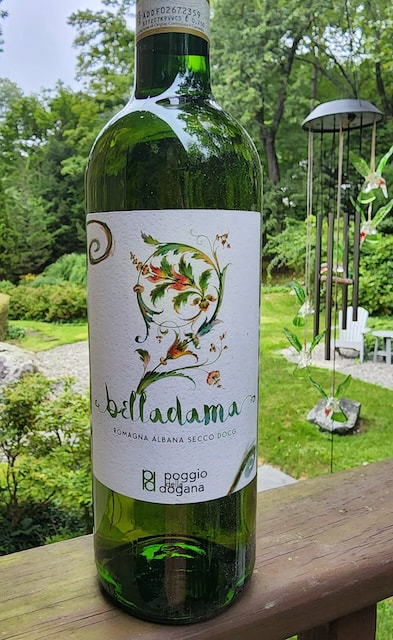
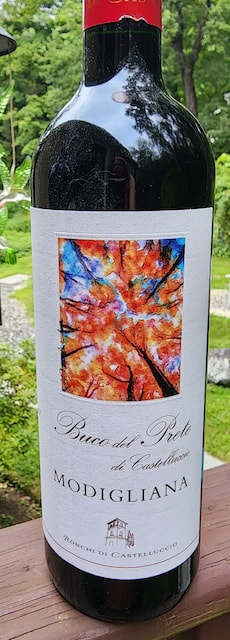
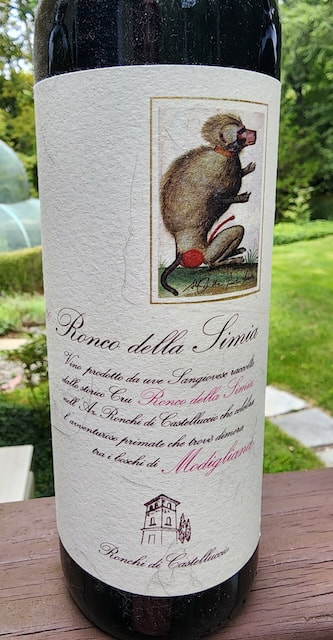
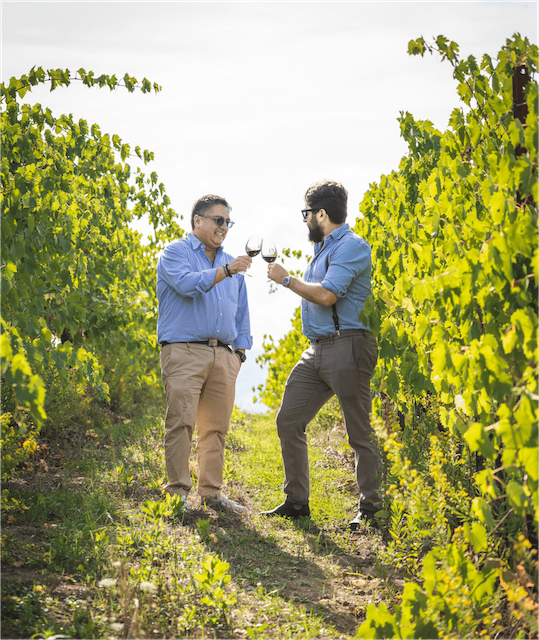
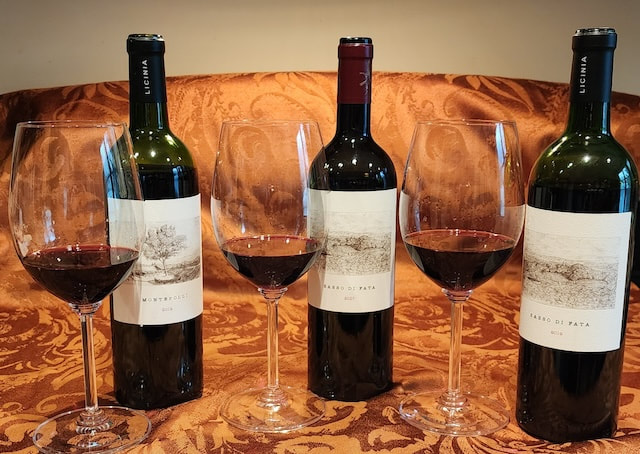
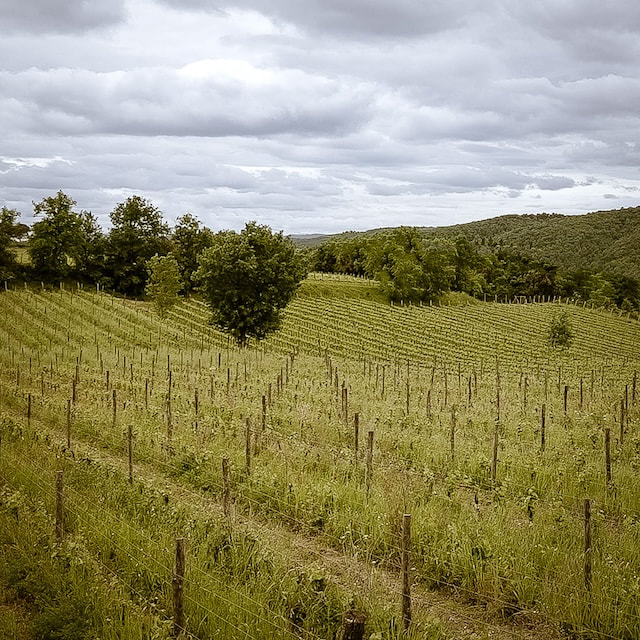

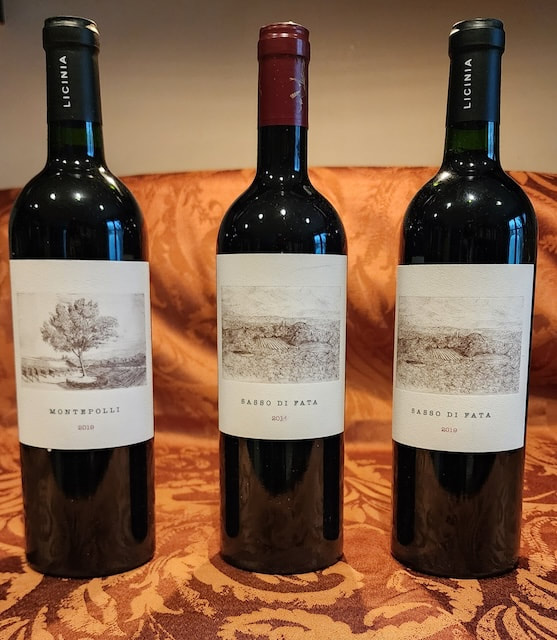
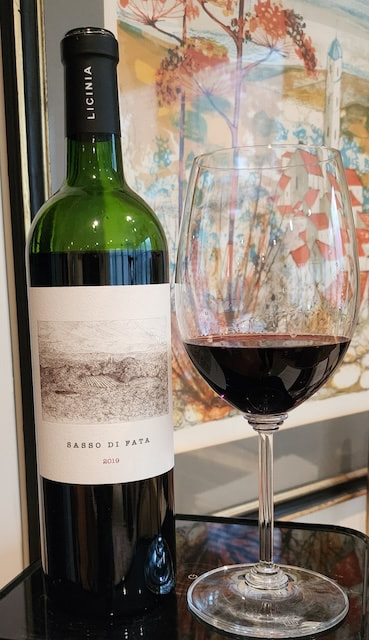
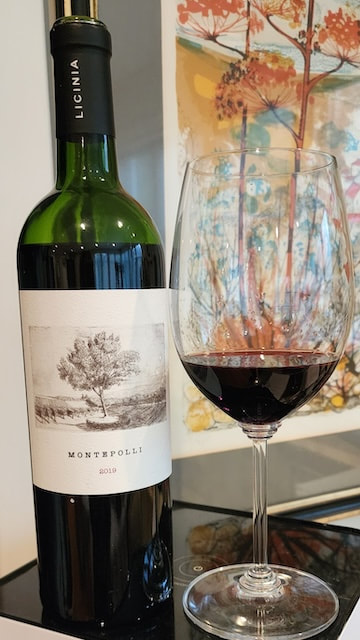
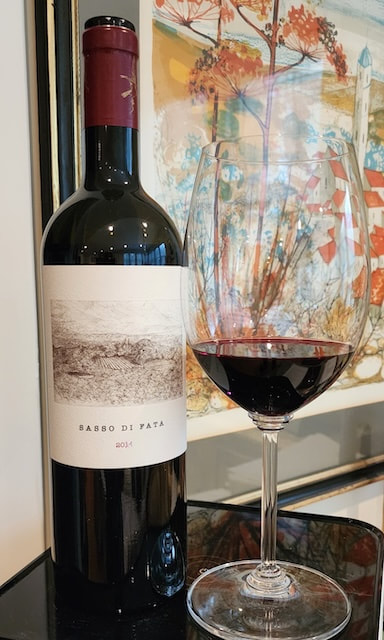

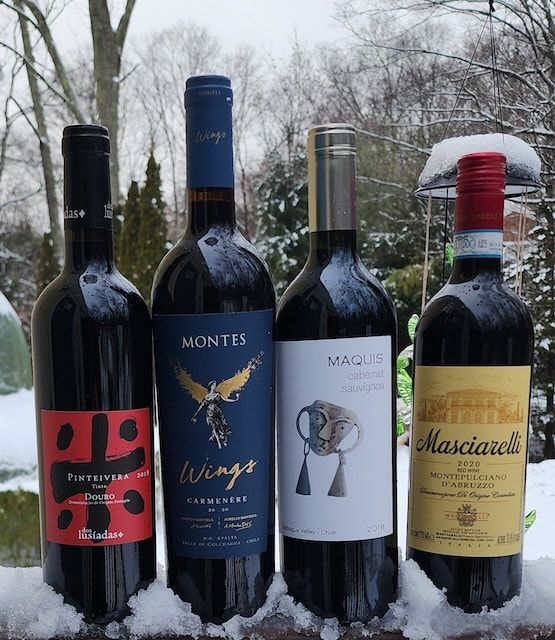
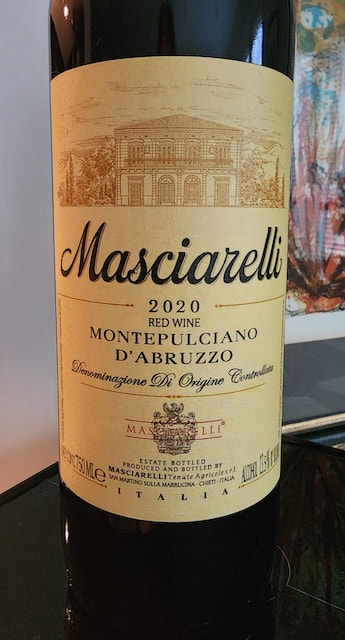
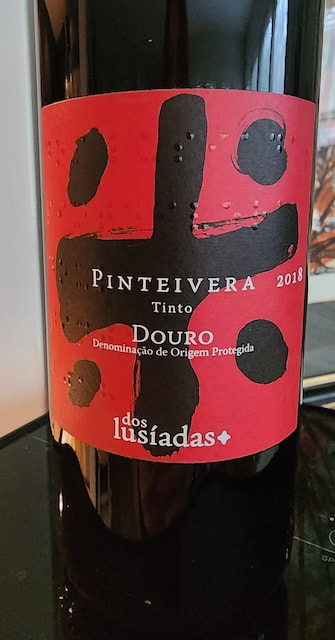
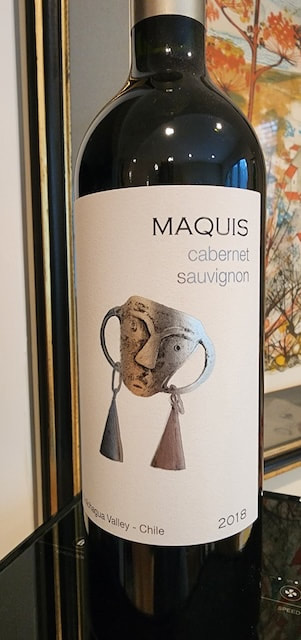
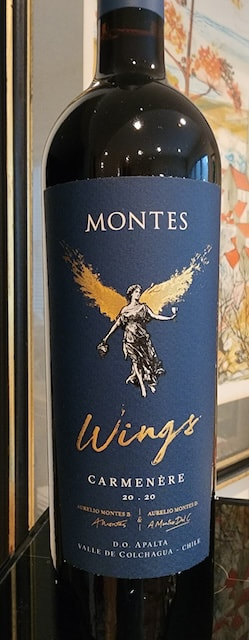
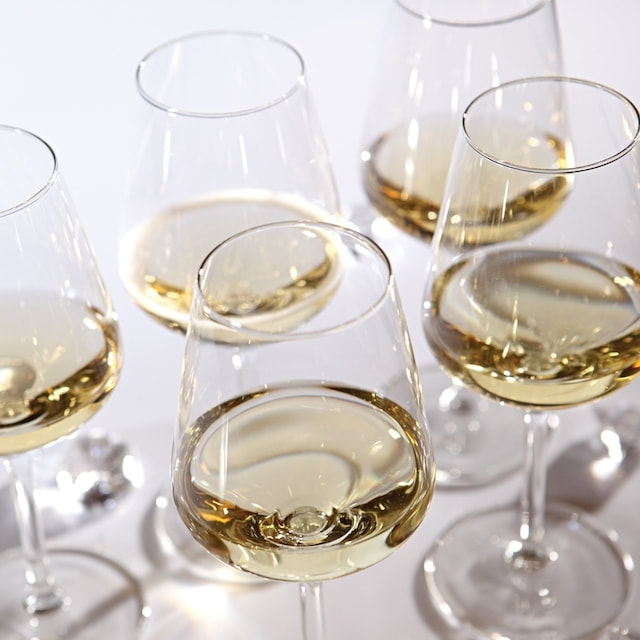
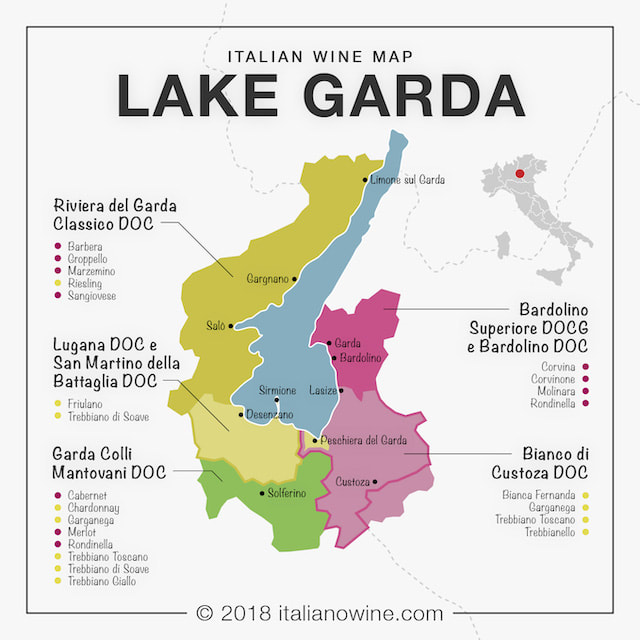
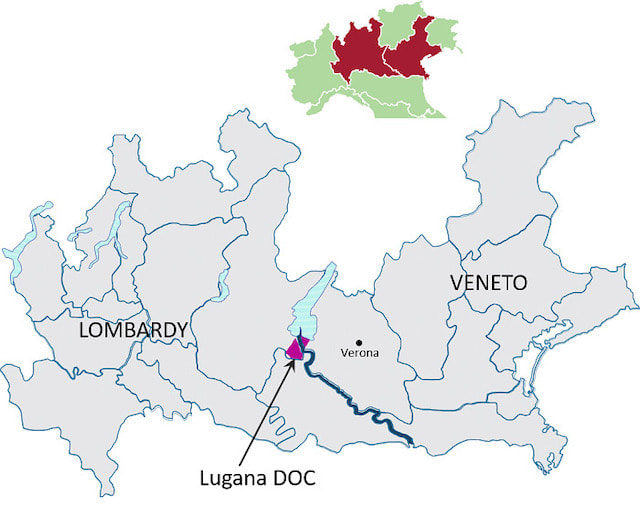
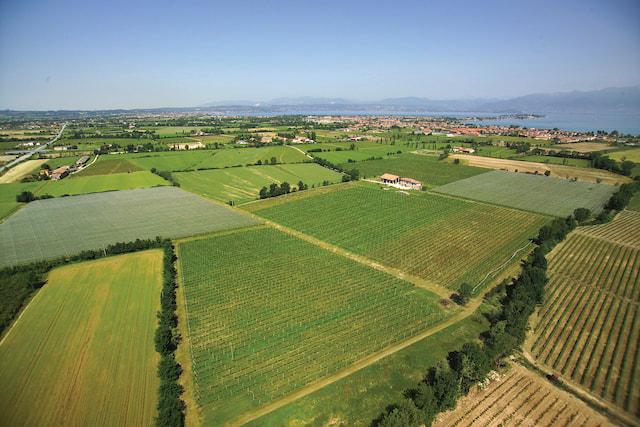
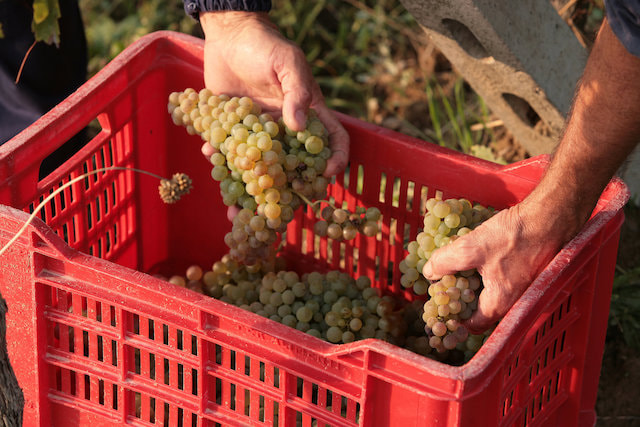
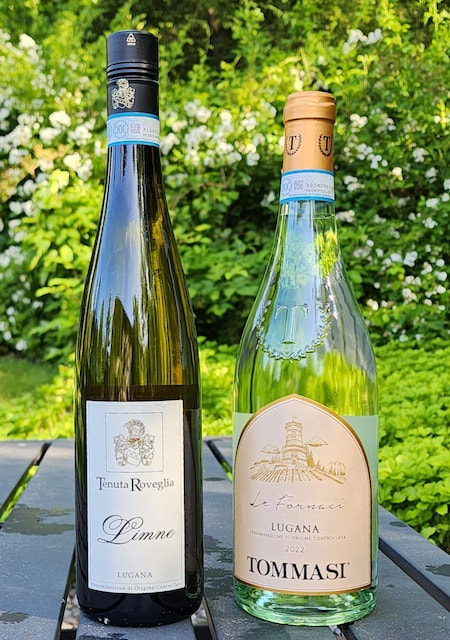
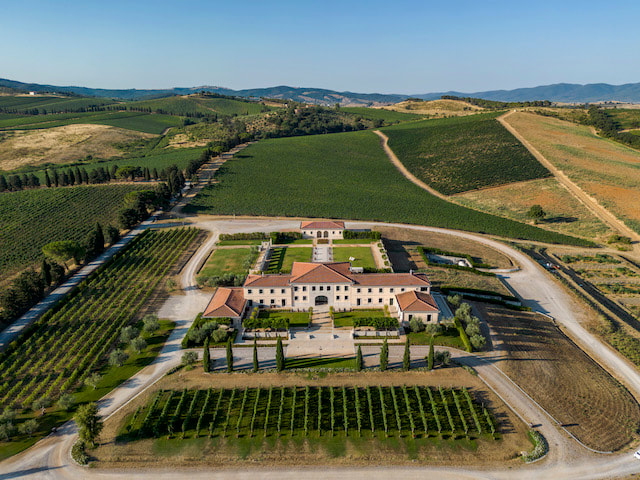

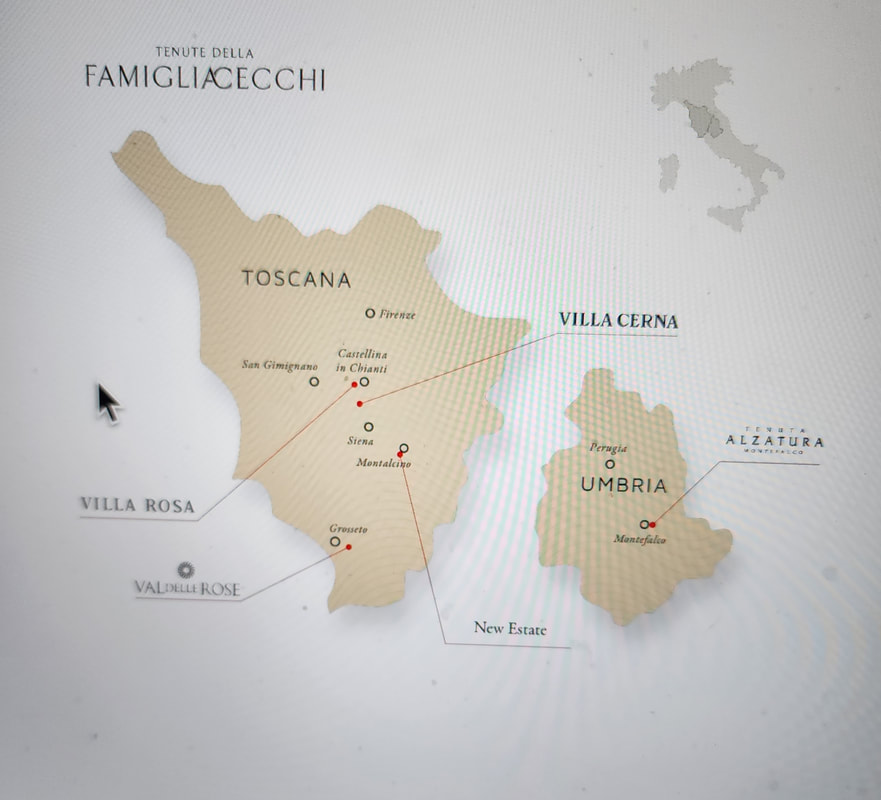
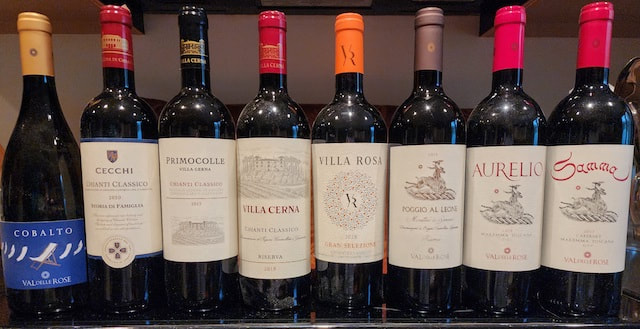
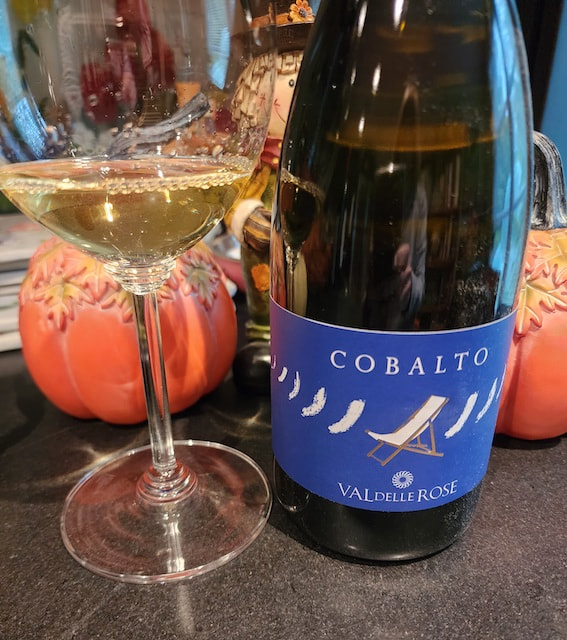
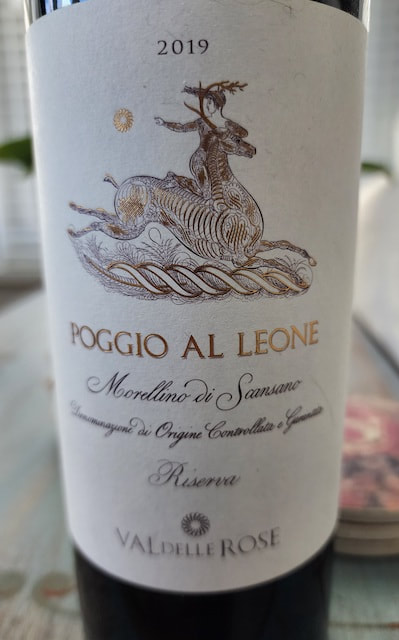
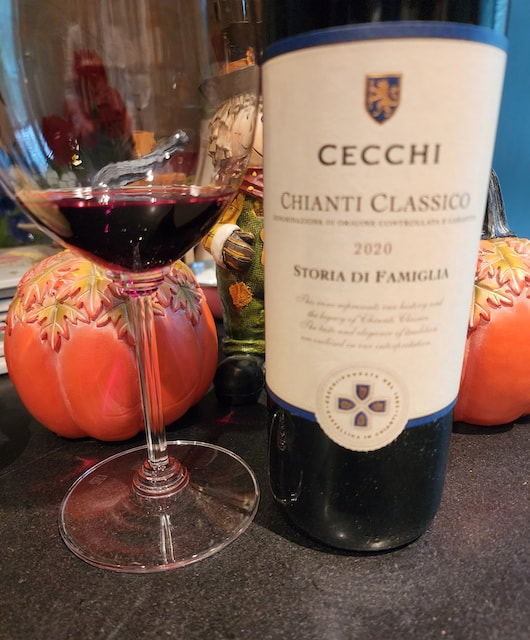
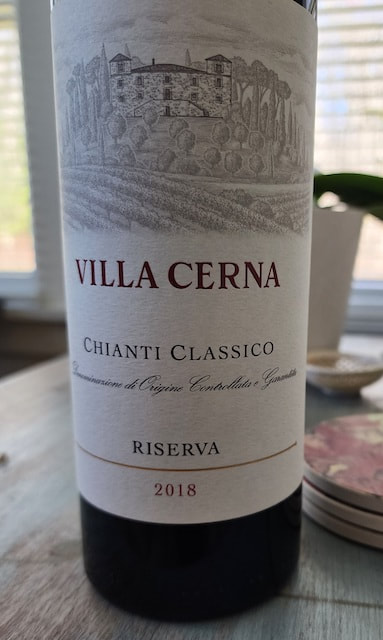
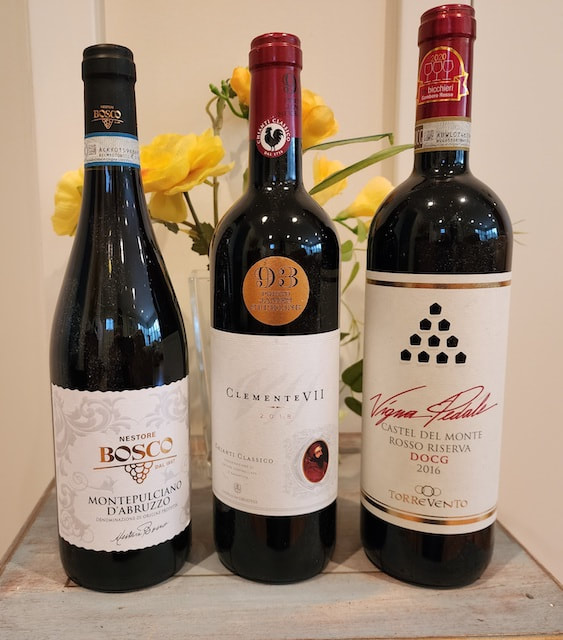

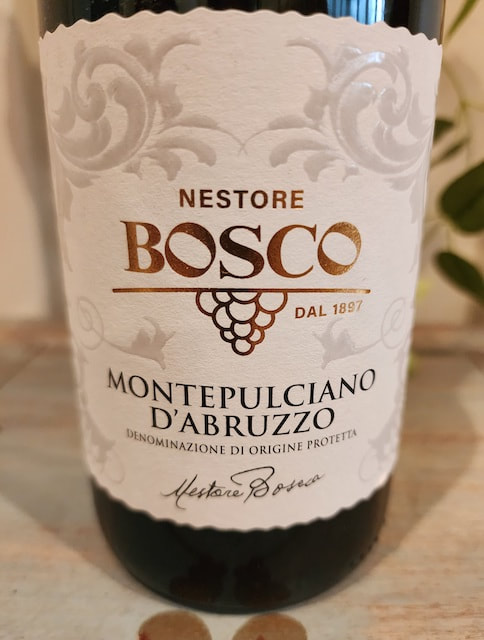
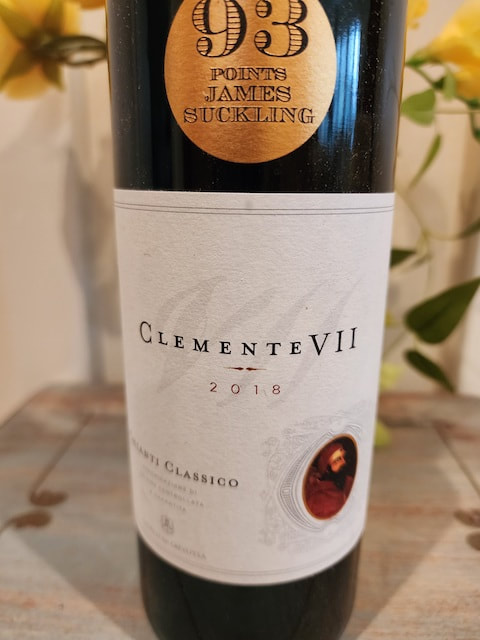
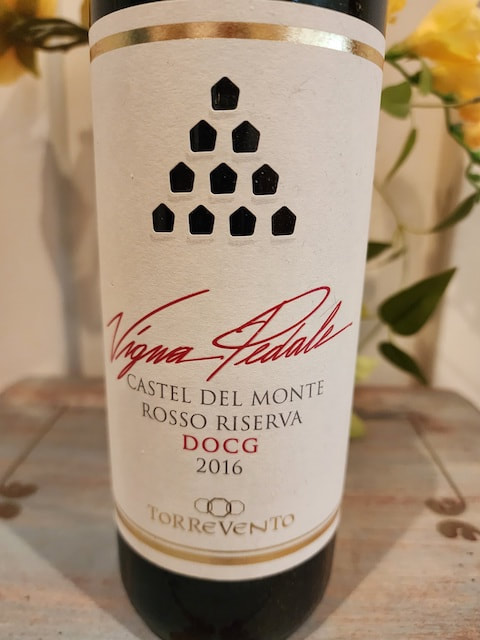
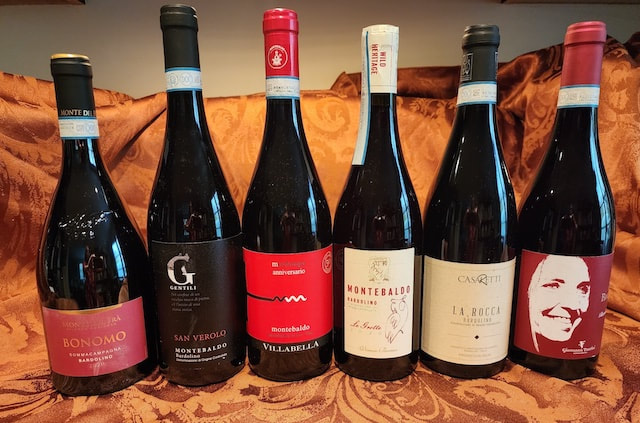
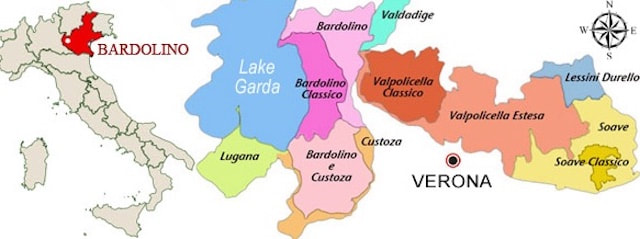
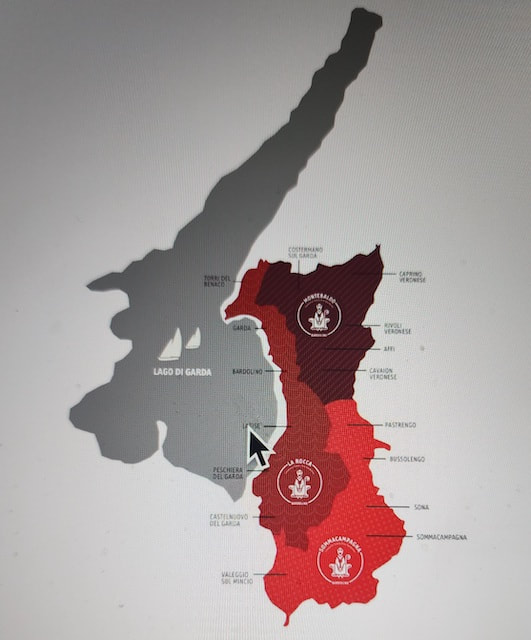
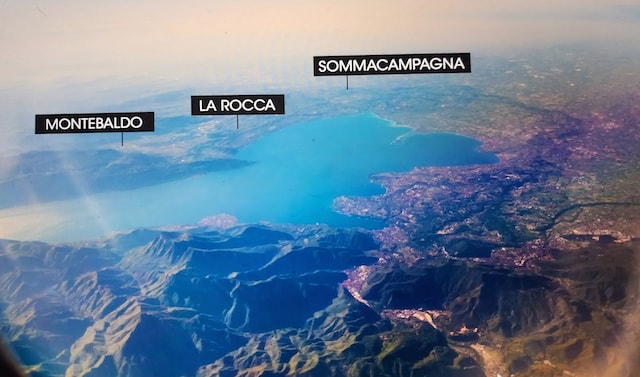
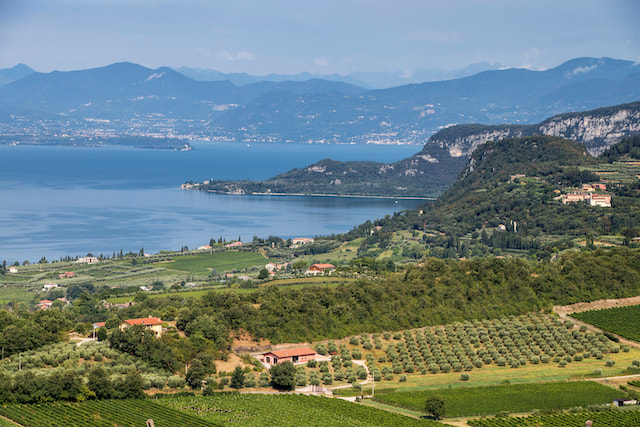
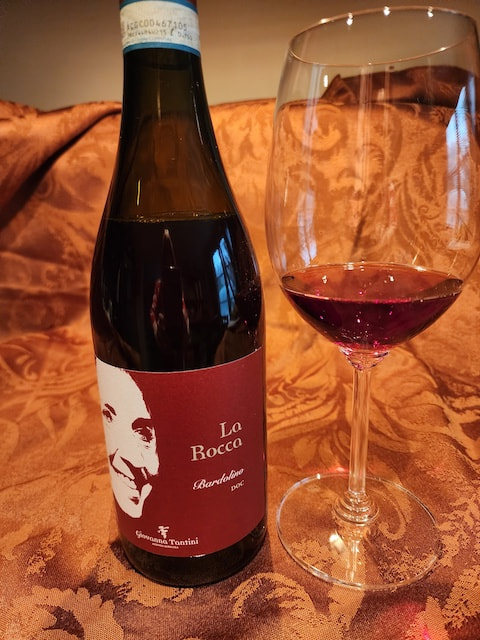
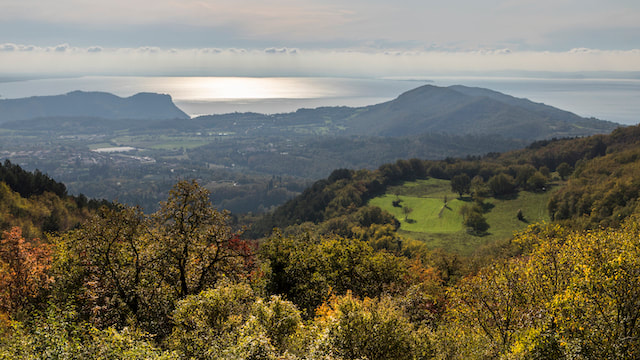
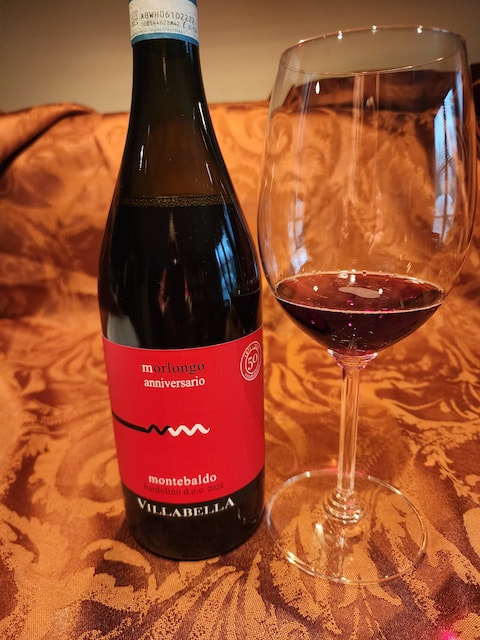
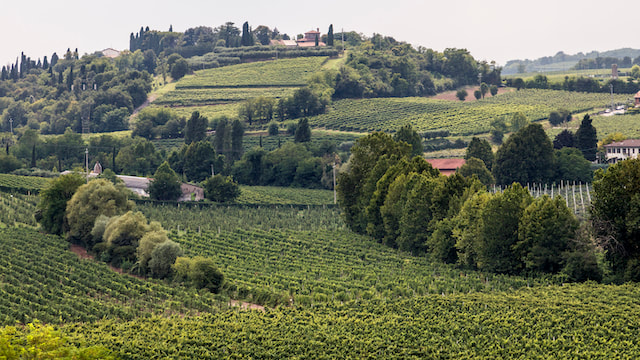
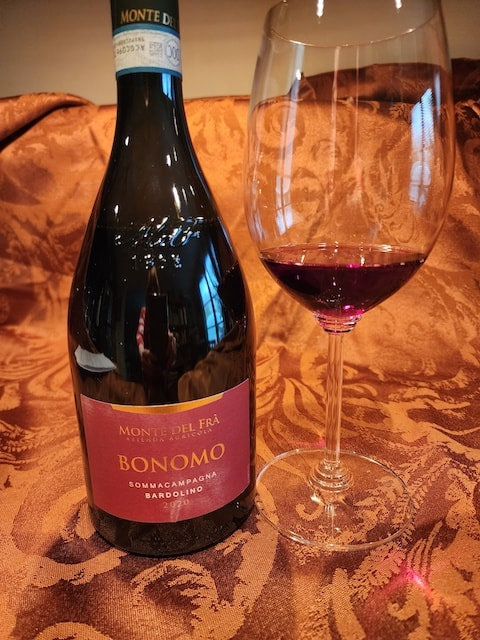
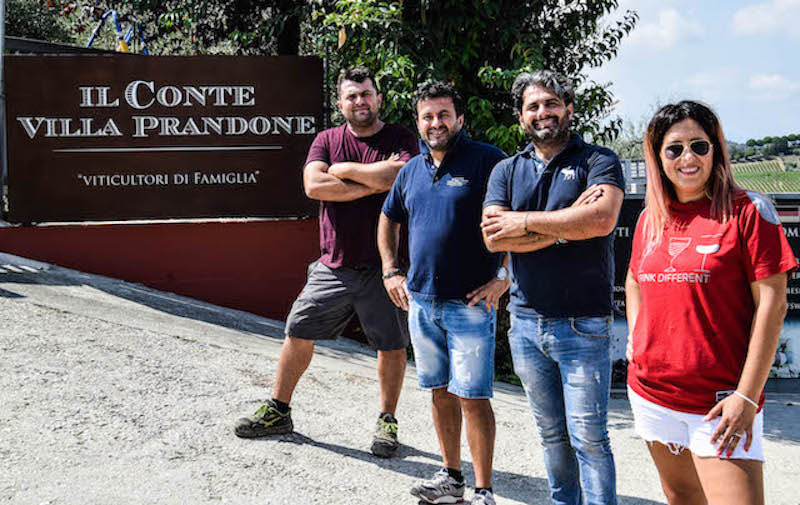
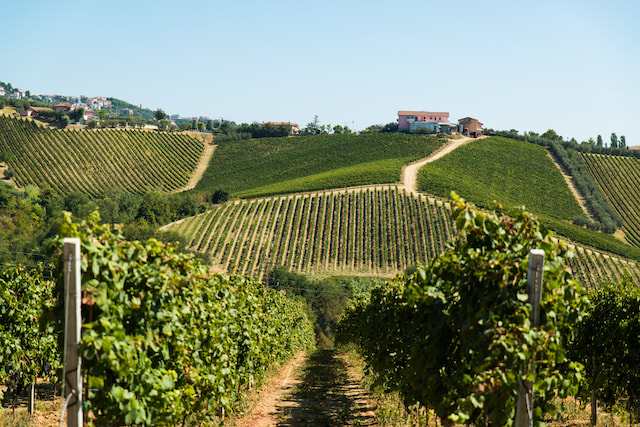
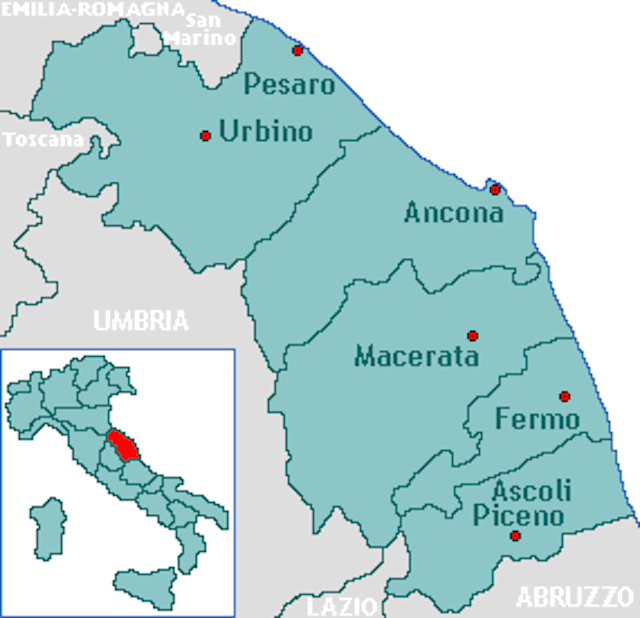
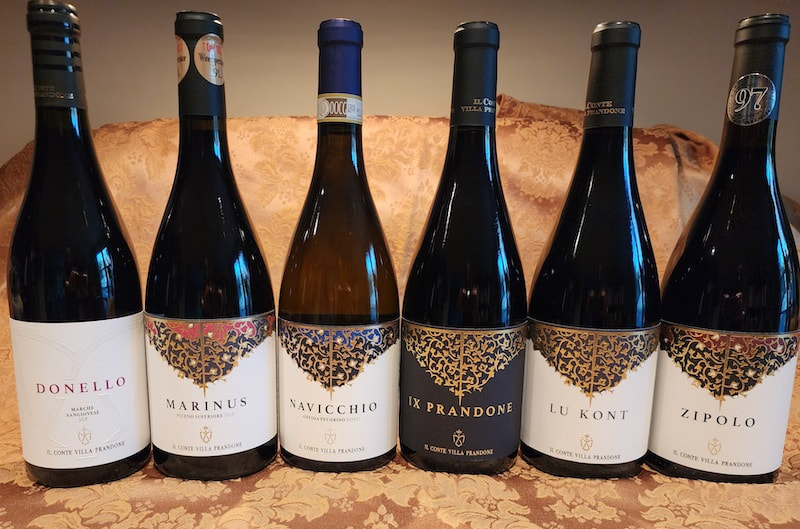
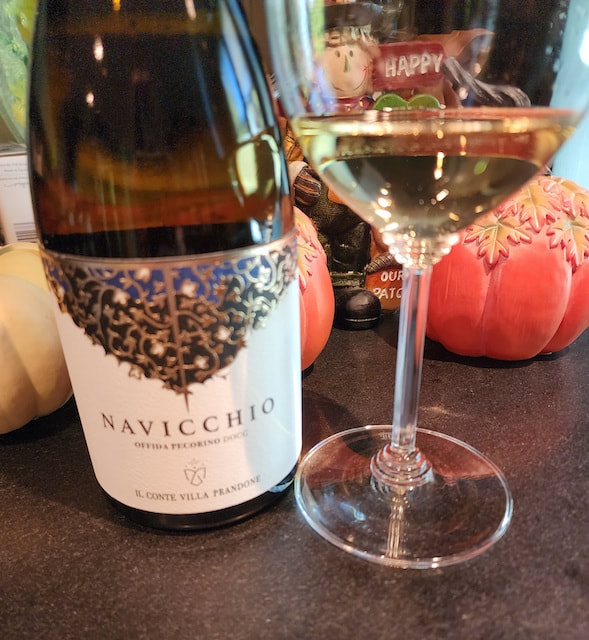
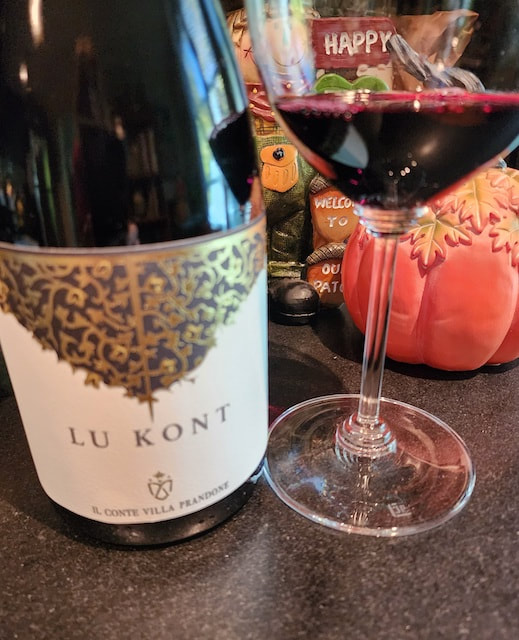
 RSS Feed
RSS Feed